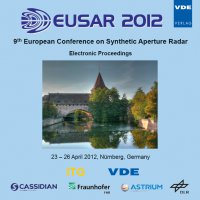Overview of the GMES Sentinel-1 Mission
Conference: EUSAR 2012 - 9th European Conference on Synthetic Aperture Radar
04/23/2012 - 04/26/2012 at Nuremberg, Germany
Proceedings: EUSAR 2012
Pages: 3Language: englishTyp: PDF
Personal VDE Members are entitled to a 10% discount on this title
Authors:
Geudtner, Dirk; Torres, Ramon; Snoeij, Paul; Bibby, David (European Space Agency ESTEC, The Netherlands)
Potin, Pierre (European Space Agency ESRIN, Italy)
Abstract:
In the framework of the EU/ESA co-funded Global Monitoring for Environment and Security (GMES) program, ESA is undertaking the development of the Sentinel-1 (S1) mission comprising a constellation of two satellites (A and B units) each carrying an imaging C-band SAR instrument. The objective of the S-1 mission is to acquire systematically and provide routinely data and information products for GMES and national services. The S-1 SAR instruments supports four exclusive imaging modes, namely the Interferometric Wide Swath (IW), the Extra Wide Swath (EW), the Strip-Map (SM), and the Wave (WV) mode. Both the IW and EW mode operate in TOPS (Terrain Observation with Progressive Scans in azimuth). The S-1 SAR system is designed to enable TOPS burst synchronization of repeat-pass datatakes supporting the generation of TOPS interferograms. In addition, the 12-day repeat orbit cycle of each satellite along with small orbital baselines will facilitate SAR interferometry (InSAR) applications. The paper provides an overview of the Sentinel-1 mission characteristics including the SAR instrument and its imaging modes, as well as discusses its SAR interferometry (InSAR) capability. Furthermore, the paper outlines the baseline mission operations strategy and commissioning phase activities.


